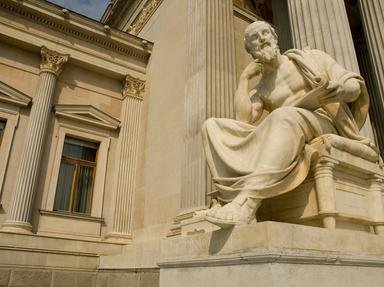Quiz Answer Key and Fun Facts
1. The book written by Gao Yuan in 1991 was titled based on a famous Chinese saying. If one wants to defeat a powerful foe, one must lure what out of the mountains?
2. The thirty-six stratagems are related to the "Book of Changes", represented by the hexagrams for earth. Who wrote the "Book of Changes"?
3. The thirty-six stratagems were divided into how many sets?
4. Chinese philosophers and military strategists recognized the value of flexibility in dealing with different types of situations. What is considered the most powerful flexible element?
5. A Chinese proverb: A familiar sight provokes no attention. This proverb corresponded to which strategy?
6. The second stratagem was used by Sun Bin during the Spring and Autumn Period (722-476 BC) to save the state of Zhao. Besiege the state of _______ to save the state of Zhao. What word belongs in the space?
7. The third stratagem is to kill with the ___________ knife. What word is missing?
8. The fourth stratagem is to do what while the enemy tires himself?
9. The fifth stratagem is to do what to the burning house?
10. The sixth stratagem is make a feint to the east while ___________ the west. Which of these belongs in the blank?
Source: Author
sw11
This quiz was reviewed by FunTrivia editor
looney_tunes before going online.
Any errors found in FunTrivia content are routinely corrected through our feedback system.
